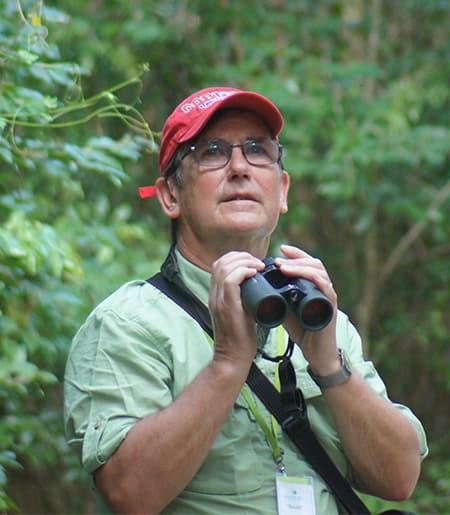Overview
I teach in a variety of courses at Cornell including BioEE 264: Tropical Field Ornithology, BioEE 261: Ecology and the Environment, and BioEE 759: Graduate Seminars in Ornithology.
Research Focus
The aim of my research is to identify selection pressures that operate on individuals in natural populations. My research interests are, therefore, in ecology, behavior, behavioral ecology, evolution, genetics, and conservation biology, mainly of birds. My research interests have generated collaboration with molecular biologists and studies of populations in fragmented habitats, effects of disease, predation, and inter-specific competition, behavioral mechanism, quantitative genetics, etc. Most of my research, and that of my students, has been a combination of population and behavioral ecology that began by studying the fates of individually marked individuals and has included various disciplines such as population ecology, behavioral ecology, population genetics, epidemiology.
When I moved to Cornell University in 1994 I took advantage of the great opportunities offered by the “Citizen Science” approach to address questions at a continental scale. I helped expand “Project Tanager” and start “Birds in Forested Landscapes,” two projects that attempted to study effects of habitat fragmentation all across North America. Confronted with an apparent epidemic of an unknown eye disease in house finches in mid-1994 I started the “House Finch Disease Survey.” This project was unusually successful at tracking the epidemic of a new strain of the parasitic bacterium Mycoplasma gallisepticum in house finches and was able to document how house finch numbers declined by about 60% because of this newly emerged disease. Since September 2000 this project has developed into an NIH/NSF-funded 5-year attempt to understand in great detail the underlying mechanisms that caused the epidemic and translate our understanding into a spatio-temporal mathematical model. The research team also includes several graduate students in the departments of E&EB, Natural Resources, and the Vet School.

